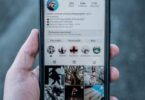This New Stolen iPhone tool of Apple was launched as part of the iOS 17.3 release. The primary purpose of this feature is to add a security layer when your iPhone will be away from familiar locations like home or work. Also, it helps to protect the password as well as your personal information when your device is stolen. However, to allow the feature to work, it has to be activated. So, dig into this article to learn How to Turn On Stolen Device Protection for iPhone.
If you live in the United States, you should know that one out of 10 smartphone users experience phone theft. With the help of the security feature released by Apple, you can avoid becoming a part of this statistic.
What Does Apple’s New Stolen Device Protection for iPhone Feature Do?
The primary purpose of this feature is to prevent someone who has stolen your device or those who know your password from making critical changes to your account.
If the protection feature is turned on, it will work in two ways. Firstly, if your mobile is in an unfamiliar location, your mobile has to be authenticated with a Face ID or Touch ID before taking any sensitive actions. Biometric verification is hard to forge. Therefore, it becomes difficult for criminals who want to access your device using a passcode.
And the other one is security delay, the main of which is to protect more sensitive information. If your phone is in an unfamiliar location, a one hour security delay will be implemented by Apple. This security delay is going to restrict certain settings from being amended for one hour, before requesting touch ID or Face ID verification. Actions which will be blocked during that time are the ability to use payment methods, access passwords or passkeys, turn off lost mode or erase all content and settings.
About Stolen Device Protection:
When you enable this protection, a few features and actions have extra security requirements, when your iPhone will be away from a familiar location. These requirements can prevent someone who has stolen the phone or those who know the passcode from making critical changes to your device.
-
Face ID Or Touch ID Biometric Authentication:
If you want to access stored passwords & credit cards, remember that these need a single biometric authentication with Face ID or Touch ID – no passcode alternative or fallback. It allows only you to access the features.
-
Security Delay:
When you take a few security actions, like changing your Apple ID password. Then, it will require you to wait for an hour. After that, you have to perform a second Face ID or Touch ID authentication.
Suppose your device is stolen. The design of a security delay is done in a way that it can prevent a thief from performing critical operations. It helps you to mark your device as lost. Thus, you can ensure that your Apple account is secure.
If the device is in a familiar location, you don’t need any extra steps. So, it is possible to use your device passcode as usual. Work, home, and a few other locations where you use your iPhone regularly are familiar locations. This feature is available with iOS 17.3 & it has to be enabled before your device is stolen or lost.
How to Turn On Apple’s New Stolen Device Protection for iPhone:
If you are willing to enable the feature, you have to use two-factor authentication for your Apple ID, and then you need to set up this. Or you should enable the following things on the device: a device passcode, Face ID or Touch ID, Find My, and Significant Locations* (Location Services).
In order to enable the feature in Settings, you have to do the following:
- First, you need to navigate to Settings. After that, you have to tap Face ID & Passcode.
- Then, you need to enter the necessary device passcode.
- Now you should tap to enable the Stolen Device Protection feature.
Suppose you are not in a familiar location, but you want to disable the feature. Hence, a security delay will be started before you make it disabled. It is necessary to disable the feature before selling, giving it away, or trading in your iPhone.
How Stolen Device Protection for iPhone Protects Your Device And Accounts:
As soon as you enable the feature, some actions require extra security, when you are not near any of your familiar locations like home or work.
Face ID Or Touch ID Biometric Authentication:
When your device is not in your familiar location, you have to authenticate with Face ID or Touch ID before taking some actions. These are as follows:
- Using passwords or passkeys saved in Keychain
- Using payment methods saved in Safari (autofill)
- Disabling Lost Mode
- Erasing all content and settings
- Applying for a new Apple Card
- Viewing Apple Card virtual card number
- Taking Apple Cash & Savings actions in Wallet (like Apple Cash or Savings transfers)
- Using iPhone to set up a new device (like Quick Start)
Keep in mind that you are still able to use the iPhone passcode for purchases with Apple Pay.
How to Turn On Stolen Device Protection for iPhone on iOS:
If you want to enable this feature, you need to use iOS 17.3 or later. Also, the device needs to have enabled Touch ID or Face ID and the Significant Locations settings. When you have both of these in place, you need to enable the extra security, and you can do this by following the below-mentioned steps.
- Your first task is to open the Settings application.
- Then, you need to tap on Face ID & Passcode.
- Now, you have to type in the passcode.
- Next, you have to scroll down to Stolen Device Protection. At last, you should tap Turn On Protection.
How to Turn On or View Significant Locations On an iPhone:
This protection requires using Significant Locations. This setting uses the most frequent location of your phone in order to include features in Maps, Car Play, & other apps. Now, you are not able to customize the Significant Locations data. It is built over time based on the location of your phone. You are capable of clearing the data or seeing a summary of the data when you change your location or shift to another place.
If you are willing to access the Significant Location settings, follow these steps:
- Your first task is to open the Settings application.
- Now, you need to tap on Privacy & Security.
- After that, you have to tap Location Services.
- Next, you should select System Services at the bottom of the page.
- You should then find Significant Locations and tap on it.
Once you see the screen, you are able to turn on or off Significant Locations. Then, you can see the home location or clear out the existing data.
Security Delay:
With the Stolen Device Protection for iPhone, in order to change the vital security settings or your Apple ID, you may need to wait an hour before using the iPhone. When your device is not in a familiar location, you have to authenticate this with Face ID or Touch ID. Then, you need to wait for your security delay to end. Now, in order to update settings, your task is to authenticate with Face ID or Touch ID again. The steps you need to follow are:
- You need to change your Apple ID password.
- You have to sign out of your Apple ID
- Your task is to add or remove Face ID or Touch ID
- You need to change your iPhone passcode
- You have to reset All Settings
- You need to update Apple ID account security settings (like you can add or remove a trusted device, Recovery Key, or Recovery Contact)
- You have to turn off Find My
- You need to disable Stolen Device Protection
When you use your iPhone for changing Apple ID password, you may not see the location of your devices at iCloud.com for a period of time. Once your device detects the familiar location, it may end the security delay.
What happens if your iPhone is Stolen?
This protection is an extra layer that is added to an existing suite of tools and is designed to prevent thieves from erasing or stealing sensitive data from your phone. It joins the list of security options, such as Find My, along with the capability of locking or erasing a lost iPhone.
With the help of Find My, you are capable of using an internet browser or other Apple devices like the iPad or Apple Watch in order to locate a missing device. If you see that your iPhone was stolen rather than being misplaced, you can use the Find My tool to mark your mobile as lost. It locks your mobile with a passcode. Also, it will display a custom message like where to return the phone if lost.
You can use a web browser to change your Apple ID password and erase an iPhone or iPad remotely. AppleCare+ With Theft and Loss comes with theft protection. However, a warranty will not recover theft or loss.
The Bottom Line:
When you keep the Stolen Device Protection for iPhone feature active, a few actions need extra protection (if your iPhone is not in a familiar location). It includes Face ID or Touch ID authentication for several tasks like using saved passwords, disabling Lost Mode, erasing content, applying for a new Apple Card, etc. The Security Delay feature will also come into play for important changes such as signing out, updating the Apple ID password, or modifying security settings.
Frequently Asked Questions
- How do you turn on your new iPhone security?
Once you update your iPhone and adjust all the settings, your task is to turn on Stolen Device Protection. If you are willing to find this, you have to navigate to Settings. Then, you need to tap on Face ID & Passcode. After that, your job is to enter the passcode. Then, you have to toggle Stolen Device Protection on.
- Can you get a new iPhone if it is stolen?
For that, your device should be covered by AppleCare+ with Theft and Loss. It is essential to sign in with the Apple ID. Then, you have to file a claim for an iPhone replacement. In order to make your iPhone lost, you have to navigate to iCloud.com/find or use the Find My app.
- Can Apple disable a stolen phone?
If your iPhone is stolen or lost and you have already set up Find My iPhone on your device, you may see this disabled. Restoring the phone is the one and only way to get past your passcode. You can complete the method of restoring the phone by entering the Apple ID and passcode to which it is locked.







